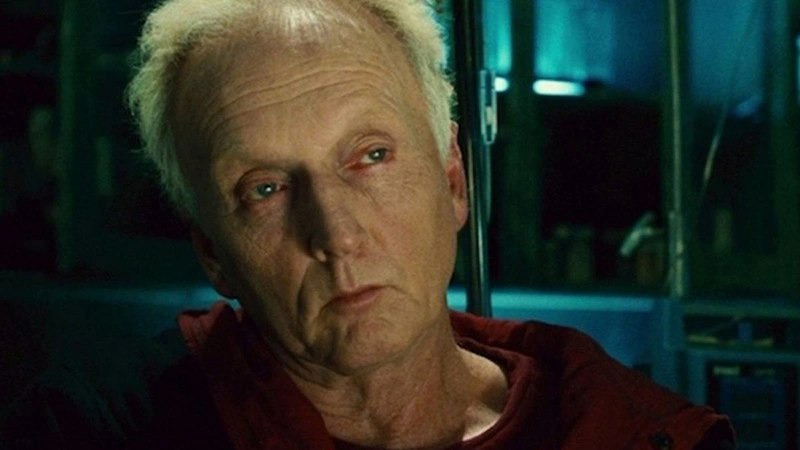A mysterious and ethically dubious character that sticks out in the dark and twisted universe of the “Saw” franchise is John Kramer, aka “The Jigsaw Killer.” John Kramer, the primary antagonist of the Saw series, is portrayed by the gifted Tobin Bell. He made his terrifying screen debut in the 2004 thriller Saw I. John Kramer is a fascinating character because of the complex morals and philosophy entwined with his actions.
Originally a civil engineer, John Kramer’s life takes a dark turn following a string of personal misfortunes, such as an unsuccessful suicide attempt and the discovery of a fatal frontal lobe tumor. His seemingly innocent passion for life takes a dark turn when he develops an obsession with putting others through life-threatening situations that he refers to as “games” or “tests.” Victims of these tests are forced to face their moral failings and imperfections, and those who fail must endure horrific repercussions.
It becomes clear as we explore all of John Kramer’s complex facets that he is not your usual enemy. The Saw franchise’s recurring theme of the fuzziness of the borders between heroism and villainy is where the intricacy lies. The investigation that follows aims to answer the perennial query: Is John Kramer a villain or a hero?
Is John Kramer from the “Saw” franchise: Hero or Villain? Explained!
Since the beginning of the Saw franchise, viewers have been captivated by the fundamental subject of the duality of hero and evil. A character whose acts might be interpreted in a variety of ways was introduced by John Kramer, who took pride in his self-proclaimed nobility and righteousness.
According to Tobin Bell’s portrayal, John Kramer believes he is the story’s hero. In his view, he is a force for moral reckoning as well as a sadistic killer. He sees his tests as a way to offer a second shot at life to those who have lost all desire to live. Although the test’s success rate is far from ideal, Jigsaw believes that those who survive come out of the experience feeling like new people.
Nonetheless, Jigsaw’s actions raise serious ethical concerns. People are forced by him to endure circumstances in which they must injure themselves or others in order to survive. He maintains his anonymity behind a wall of jargon, saying he is not the one who actually kills people.
The tenth film in the series, Saw X, directed by Kevin Greutert, offers another perspective on the hero-villain controversy. He addresses the current debate among fans regarding John Kramer’s moral character in an exclusive interview. Greutert suggests that the mystery surrounding John’s identity as a hero, an anti-hero, or just an outright villain is what makes the Saw movies so magical.
In the ninth film, John Kramer sets up a historical trap by putting a youngster in one of his own devices. According to Greutert, the goal of this scenario was to let viewers relate to John in a manner that they hadn’t before. He highlights the danger of presenting John as more defective than he has ever been and talks about how a little boy named Carlos has unexpectedly entered the picture.
Greutert feels that John’s act of physical bravery in rescuing Carlos gives the character a more heroic appearance. This bold action was meant to reveal a different side of Jigsaw and raise the question of whether his character is more complex than previously believed.
The difficulties encountered when filming intense traps, such as the blood-board scenario, are revealed through the director’s observations. In order to shield their eyes from the corrosive blood, prostheses were worn by stunt performers, who suffered great discomfort. The choice to reshoot certain scenes, such as Tobin Bell’s character being blood-boarded, demonstrated how committed the filmmakers were to preserving the spirit of John Kramer.
The one-of-a-kind scene in Saw X, where John Kramer is left to the mercy of events planned by Cecilia, deviates from the typical story in which everything goes as Jigsaw had intended. A further level of nuance to Jigsaw’s persona is revealed by the fear and sorrow on his face as Carlos gets involved. This surprising development calls into question the idea of John as an all-powerful, all-knowing antagonist.
Despite his despicable ways, Jigsaw has one unique quality that makes him stand out from other violent figures: he has bounds. Despite their seeming distortion, Jigsaw’s exams are a representation of strong moral and ethical beliefs. Whether it is good or wrong, this moral foundation gives his character a certain depth.
The age-old question remains: Is Jigsaw a villain or a hero? The solution is elusive, existing in the morally dubious spaces that the Saw film series so expertly draws upon. Jigsaw can, at most, be viewed as an anti-hero—a person with noble goals but obviously perverse tactics. Or, most likely, he’s just a bad guy with oddly admirable limits.
Saw X, which is slated to take place in between Saw and Saw II, is expected to carry on the heritage of the Saw franchise by delving deeper into the mystery surrounding John Kramer. The movie follows Jigsaw as he pursues justice and abducts con artists who tricked him into believing they had a “miracle cure” for his disease. Once more, viewers will be thrust into Jigsaw’s morally dubious worldview.
In conclusion, the genius of the Saw franchise is in its capacity to maintain viewers’ curiosity about the character of John Kramer, the main character. Is he a pure villain, an anti-hero, or a hero? Like the elaborate traps he builds, the answer is evasive, leaving admirers to speculate and argue endlessly about The Jigsaw Killer’s moral compass.
